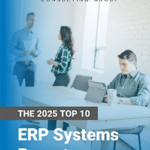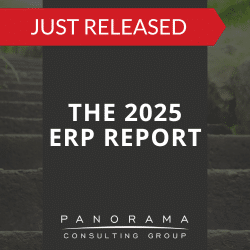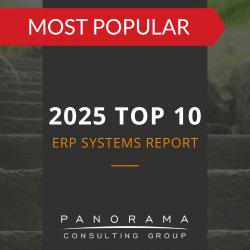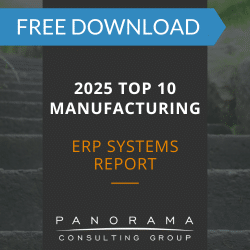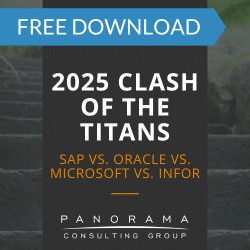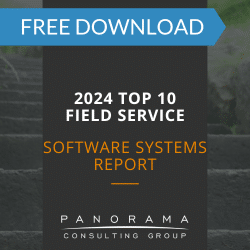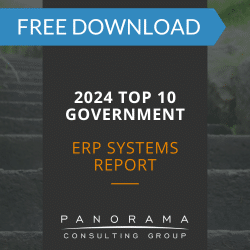- Digital document fragmentation remains a major challenge, even for modernized organizations, leading to inefficiencies and compliance risks.
- Manufacturing and healthcare face heightened risks, with production errors and patient safety concerns stemming from poor document control.
- Legacy systems and weak IT governance create disconnected workflows and version inconsistencies.
- ERP solutions can centralize document management but require proper integration with industry-specific systems.
Despite large-scale automation and IT infrastructure overhauls, enterprises continue to battle a persistent and costly challenge—digital document fragmentation. Critical documents are scattered across multiple systems, workflows remain inefficient, and decision-makers struggle with outdated and conflicting information.
So why, in an era of cloud computing and AI-powered automation, do digital workflow inefficiencies remain a pervasive issue?
Today, we’re exploring the root causes of document fragmentation and showing you how to transform your digital workflows into a competitive advantage.
2025 Clash of the Titans
SAP, Oracle, Microsoft, and Infor each have a variety of systems that can support data-driven decision-making. We surveyed customers of these four vendors to find out what their selection and implementation process was like.
The Costly Chaos of Digital Fragmentation Across Industries
For industries where production accuracy and regulatory adherence are non-negotiable, such as manufacturing and healthcare, digital workflow inefficiencies translate into costly delays, regulatory risks, and lost revenue opportunities.
Manufacturing firms, for instance, frequently face digital document control challenges in manufacturing processes, where version inconsistencies lead to production errors, supply chain bottlenecks, and more.
Meanwhile, healthcare providers suffer from electronic health record (EHR) data fragmentation, which disrupts patient care and regulatory compliance.
The Impact of Digital Workflow Inefficiencies on Enterprise Decision-Making
The consultants on our ERP expert witness team have seen the consequences of digital workflow inefficiencies extend far beyond wasted time and duplicate efforts. Ultimately, these inefficiencies complicate decision-making.
For example, when patient histories, diagnostic results, and treatment plans are scattered across disconnected systems, doctors struggle to access accurate, real-time data, leading to delayed or incorrect medical decisions.
The Culprits Behind Digital Document Fragmentation
While many enterprises have moved away from paper-based documentation, the shift to digital has often been reactive rather than strategic. Instead of implementing an integrated document management strategy, companies patch together existing legacy systems, standalone file-sharing platforms, and manual approval processes.
Legacy Systems
One of the most pressing digital document fragmentation challenges stems from outdated enterprise applications. Even modernized organizations still rely on a mix of legacy ERP systems, custom-built solutions, and industry-specific software that were never designed to integrate.
Poor IT Governance
Another challenge is the growing use of cloud-based collaboration platforms without centralized governance. When employees use multiple file-sharing services—such as Google Drive, SharePoint, Dropbox, and internal document repositories—finding the latest approved version of a document becomes a time-consuming task.
What’s the Result?
- Outdated policies or safety documents are unknowingly used, resulting in audit failures and potential fines.
- Employees store sensitive files in unauthorized platforms without proper encryption or access controls, increasing the risk of breaches.
- Outdated supplier contracts, service agreements, and order specifications cause delays and financial losses.
- Executives base strategic decisions on conflicting or incomplete reports due to version inconsistencies across systems.
In many of our manufacturing engagements, we’ve seen companies struggle with digital sprawl, where uncontrolled document proliferation across disconnected systems complicates quality control processes. This is particularly damaging in highly regulated manufacturing sectors, such as aerospace and pharmaceuticals, where even minor lapses in digital document control can lead to failed audits, production halts, and costly recalls.
Effective digital document control in manufacturing processes requires software functionality such as:
- Automated version control
- Audit trails that log every document change
- Advanced search capabilities
- Integration with product lifecycle management (PLM) systems, quality management systems (QMS), and supplier portals
We recommend implementing an ERP-integrated document management system that ensures that engineering teams are always working with the latest specifications, procurement departments have immediate access to approved supplier documents, and compliance teams can quickly retrieve audit-ready records.
How Modern ERP Can Improve Digital Document Control
Modern ERP systems offer a centralized approach to document management, ensuring that critical files are accessible, up to date, and fully integrated with business processes. The key is selecting an ERP system that aligns with your enterprise’s unique needs.
Many ERP vendors promise seamless integration and robust document management capabilities, but without independent selection guidance, organizations risk investing in a system that only partially solves the problem.
The Importance of Independent ERP Selection
An unbiased ERP selection process is critical for several reasons:
- An independent consultant can help you select an ERP solution based on long-term business needs rather than on vendor sales pitches (or on referral fees as most other consultants do).
- An unbiased advisor that doesn’t receive vendor referral fees can help you negotiate contract terms that ensure full accountability and prevent costly surprises.
- An independent ERP consultant can sufficiently explore other document management strategies. In some cases, a dedicated document management system (DMS) could be a more cost-effective and flexible option than ERP software.
Strategic Recommendations for CEOs
Digital transformation success requires a multi-layered approach that not only centralizes document management but also ensures seamless adoption and long-term sustainability.
1. Define a Clear Enterprise-Wide Document Strategy
Before investing in any technology, organizations must establish a formalized document governance strategy. This means defining document ownership, version control policies, security protocols, and access rights across all departments.
By conducting a comprehensive audit of existing document workflows, CEOs can identify inefficiencies, uncover hidden dependencies between departments, and establish clear objectives for a document management framework.
2. Combine ERP with AI-Powered Automation for Smarter Document Management
A modern ERP system is essential for centralizing digital documents, but it is not a silver bullet. AI-powered automation can take document control to the next level by streamlining classification, indexing, and retrieval. Machine learning algorithms can automatically tag documents, detect duplicates, and suggest optimal storage locations, reducing manual effort and human error.
For industries with strict compliance requirements, AI can flag anomalies in document approval workflows, ensuring that outdated or unauthorized files are not used in critical processes.
3. Assess the Cost-Benefit Equation Before Committing to ERP
- Beyond licensing fees, you must budget for integration, consulting, training, and ongoing maintenance.
- A full-scale ERP rollout can take months or years, often leading to operational disruptions, unexpected delays, and resistance from employees.
- Integration with supplier portals, compliance platforms, and other applications can be technically complex, requiring custom development, extensive data mapping, and rigorous testing.
CEOs should conduct a thorough cost-benefit analysis to determine whether a full ERP deployment is necessary. This means assessing total cost of ownership, expected ROI, and whether a phased or hybrid approach makes sense.
Learn More About Digital Document Management
Organizations cannot afford to let uncontrolled digital sprawl persist. The inefficiencies, compliance risks, and financial losses caused by fragmented documentation are too significant to ignore.
Our independent ERP selection consultants can help you bring order to the chaos, ensuring that critical documents are centralized, workflows are streamlined, and data-driven decision-making becomes the norm rather than the exception.
